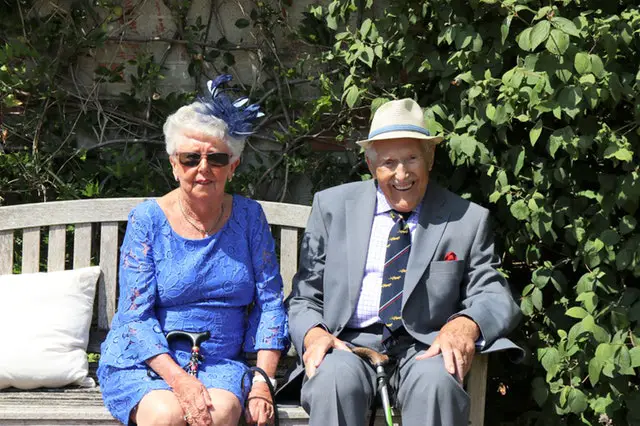Continuing Care Retirement Community - What is a CCRC?
Table of Contents
- What Is a CCRC?
- The Benefits of Living at a CCRC
- Independent Living, Assisted Living, and Skilled Nursing — What’s the Difference?
- Is a CCRC Right for Me?
- The Different Types of CCRCs
- What Does a CCRC Cost?
- Questions to Ask When Visiting a CCRC
- Applying for Residence at a CCRC
- Choosing Your Independent Living Unit and Transitioning to Your New CCRC
1. What Is a CCRC?
A CCRC (Continuing Care Retirement Community also known as a LifePlan community), is a living option for seniors who want to live independently but prefer residing in a community of their peers with the option to increase helpful services as they age. These communities offer a number of services that can widely assist seniors whenever they need them. In addition, they offer seniors the option to age in place, rather than forcing them to uproot their lives as their abilities change.
What Makes a CCRC Special?
A CCRC is a special type of senior housing that allows seniors to take advantage of the precise services they need to live comfortably and safely. Seniors often want to live independently for as long as they can, and this type of senior care facility provides this option. They are also living within a vibrant community, so they do not feel isolated. In the event of a change in their ability to live independently, additional services can be provided either in the area in which they already live or in areas close by.
Residents of a CCRC can reevaluate their needs as time goes on while essentially remaining in the same place, thus eliminating disruption in their lives as they grow older.
What Services Do CCRCs Offer Seniors?
Services at these senior housing facilities can range from little to nothing, as is the case with independent senior living, to skilled nursing and assisted living. Emergency medical assistance is also an option, so the families of seniors living in a CCRC know their loved one has help on hand if necessary. Also, these facilities often offer a number of other services, such as bathing and hygiene assistance, housekeeping, transportation, and activities and outings.
Almost anything a senior could need is available at a CCRC.
Almost anything a senior could need is available at a CCRC. Depending on the CCRC's pay structure, those who do not require a particular service simply do not pay for it. If things change over time and another service is needed, seniors can add to their care without having to move outside the community they love.
Choosing a CCRC for Senior Care
CCRCs give seniors and their family members the greatest peace of mind when it comes to all-inclusive senior housing. As multiple service options are available for whenever a senior requires them, CCRCs provide the most freedom, protection, and ease for those who wish to age in place as effortlessly as possible during their golden years.
2. The Benefits of Living at a CCRC
There are many benefits associated with living at a Continuing Care Retirement Community (CCRC, also known as a LifePlan community). When you choose this lifestyle, you are making a healthy choice that will benefit you for years to come. There are many options available to you, and the CCRC of your choice will ensure that you are able to change your services as your life changes.
You Are Not Alone
When you choose senior housing at a CCRC, you will never be alone, because people are always nearby – both neighbors and caregivers. This offers your family members and loved ones peace of mind while providing you with as much help and/or independence as is necessary.
You Have Access to Everything You Need
CCRCs offer so much more than typical retirement homes, with services ranging from healthcare and emergency medical services to assistance with running errands and housework. Resident activities are organized and common areas such as the cafeteria and gym are usually available.
You Can Age in Place Easily
You may not need some of the senior-care options available at your CCRC, but over time, your needs may change. At a CCRC, instead of having to move to a new place to gain access to aging services, you’ll be able to stay in the same community, if not your same home. These communities allow residents to age in place and offer alternative options as they age – a specialized program that isn’t available in any other type of senior living facility.
What Kind of Lifestyle Will I Have?
At a CCRC, your lifestyle will be whatever you want it to be! You will maintain your independence while gaining access to emergency and long-term medical care, day-to-day assistance, and leisure activities.
You will design the lifestyle that is most effective for you and add additional services as they become necessary. Basically, you will be free to live your life your way while experiencing easy transitions.
Which Type of CCRC Contract Should I Seek?
It can be difficult to decide which type of senior housing contract is best, especially since one of these types of communities could be more beneficial for one person than another. Someone who might soon need long-term care, for example, may want to consider residency in a Type A community, but what about someone who is years away from this? Is it better to risk the possibility of not having all the services available but save money by choosing a Type C contract? Or is it better to have the safeguard of assured services and choose a Type A contract?
This depends largely on the individual person and his or her preferences, family, medical histories, and expectations for the future. It’s best to remember that no one choice is right for every individual. Instead, start considering what options will suit your specific needs.
